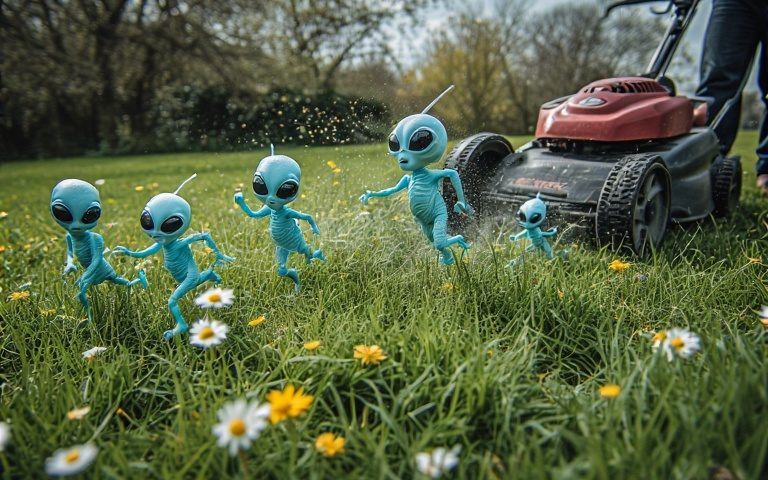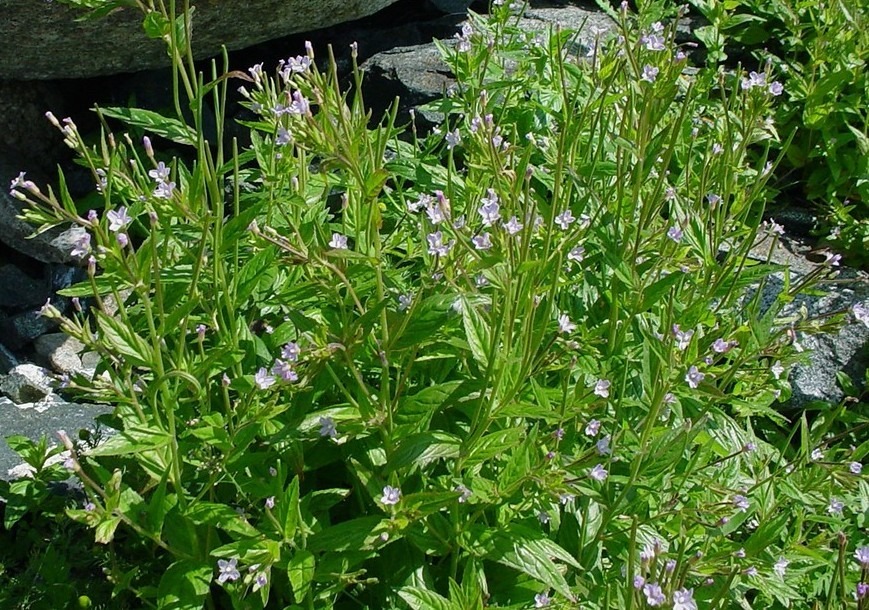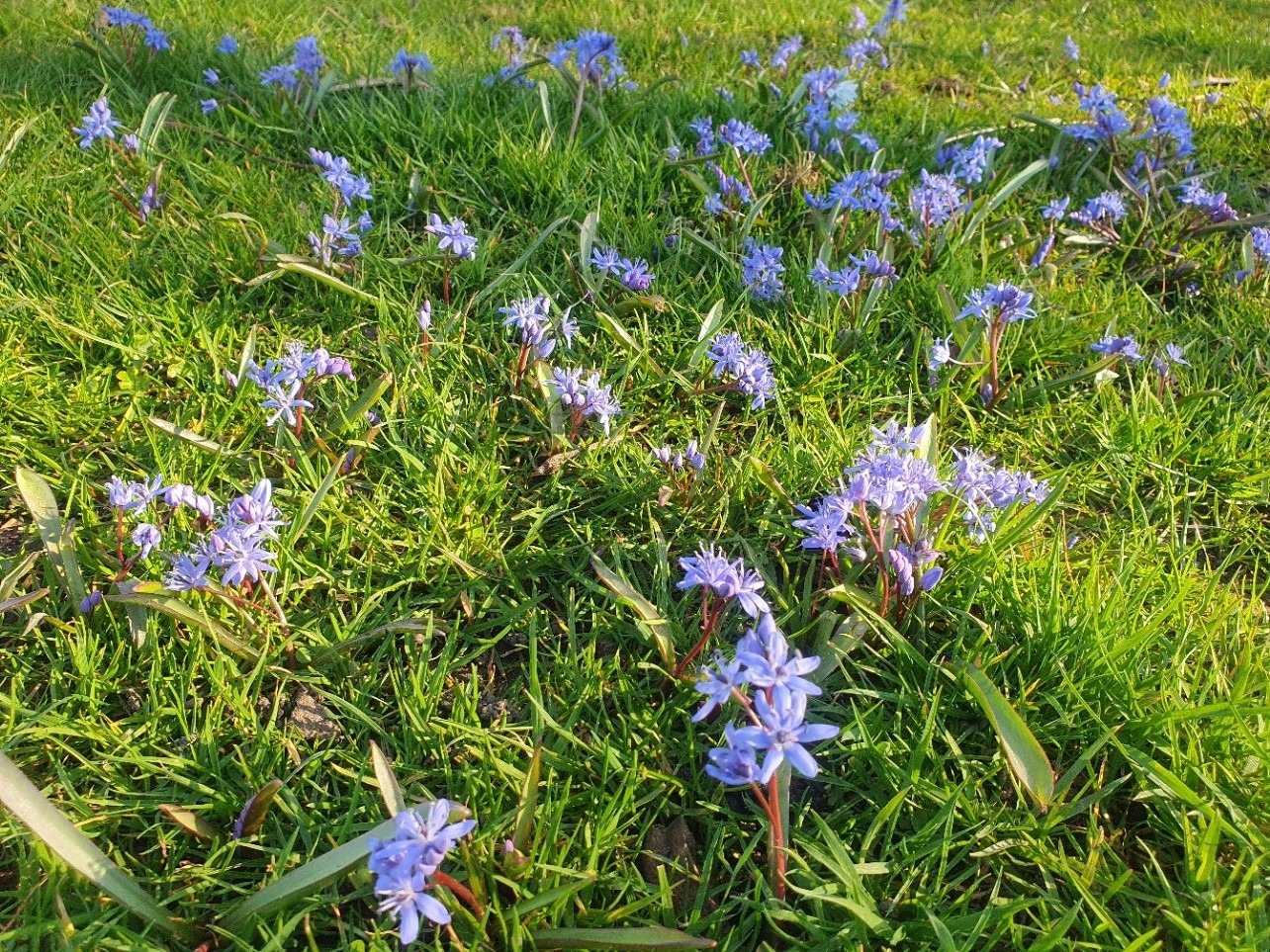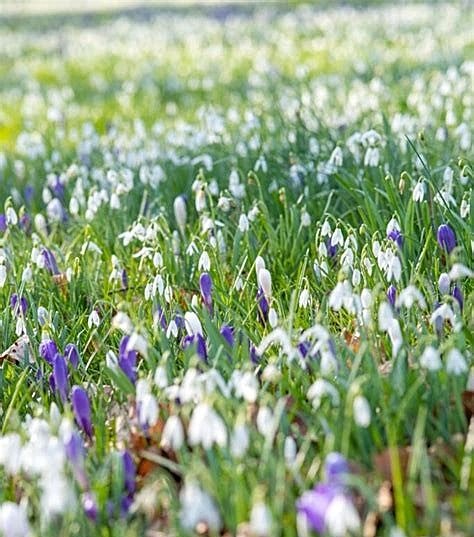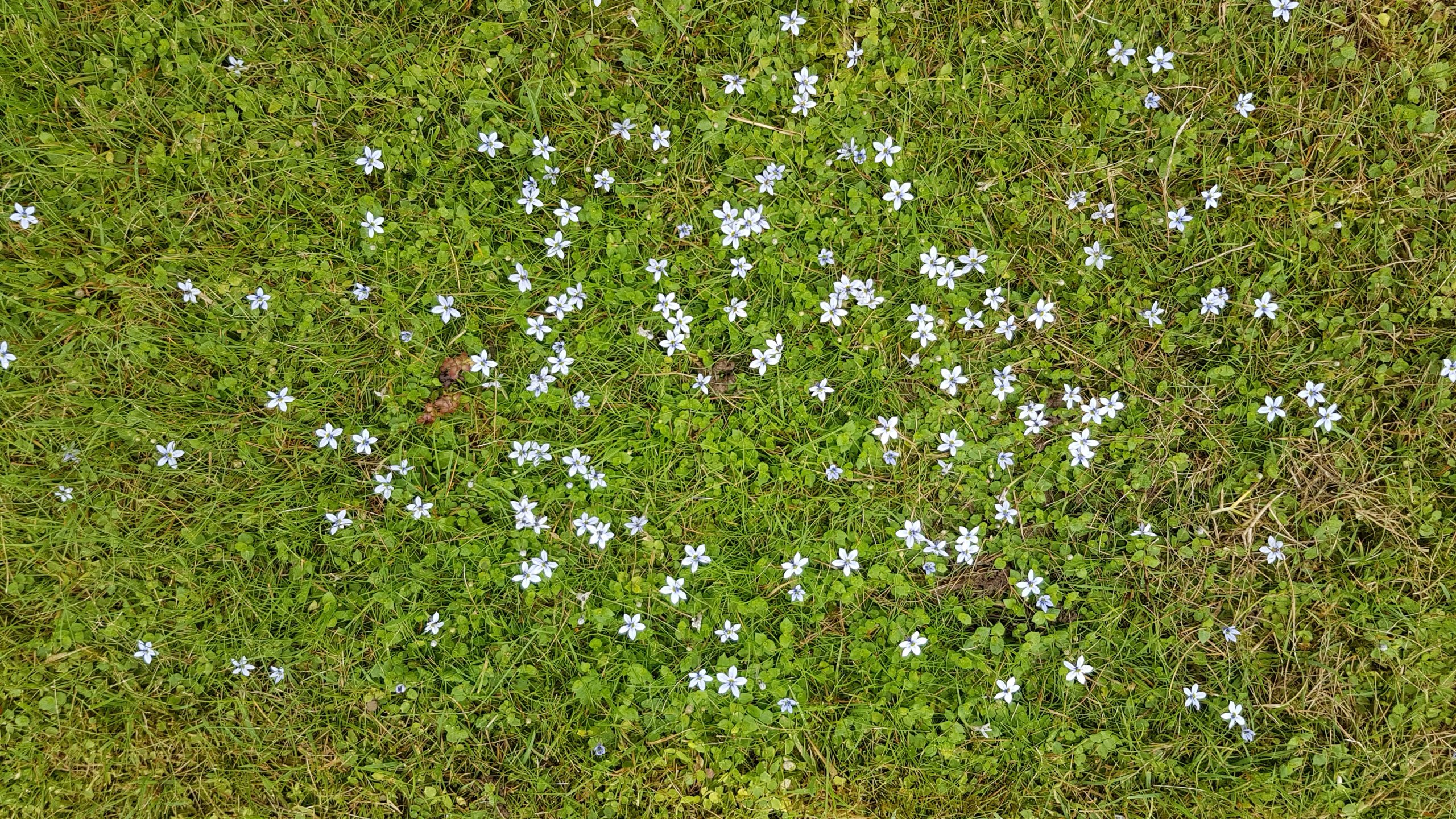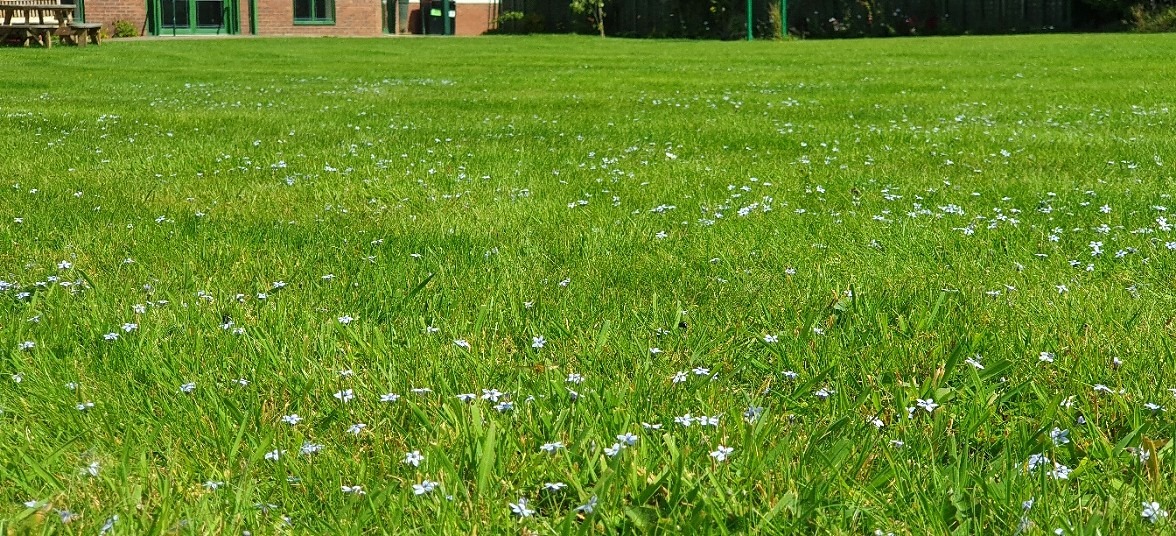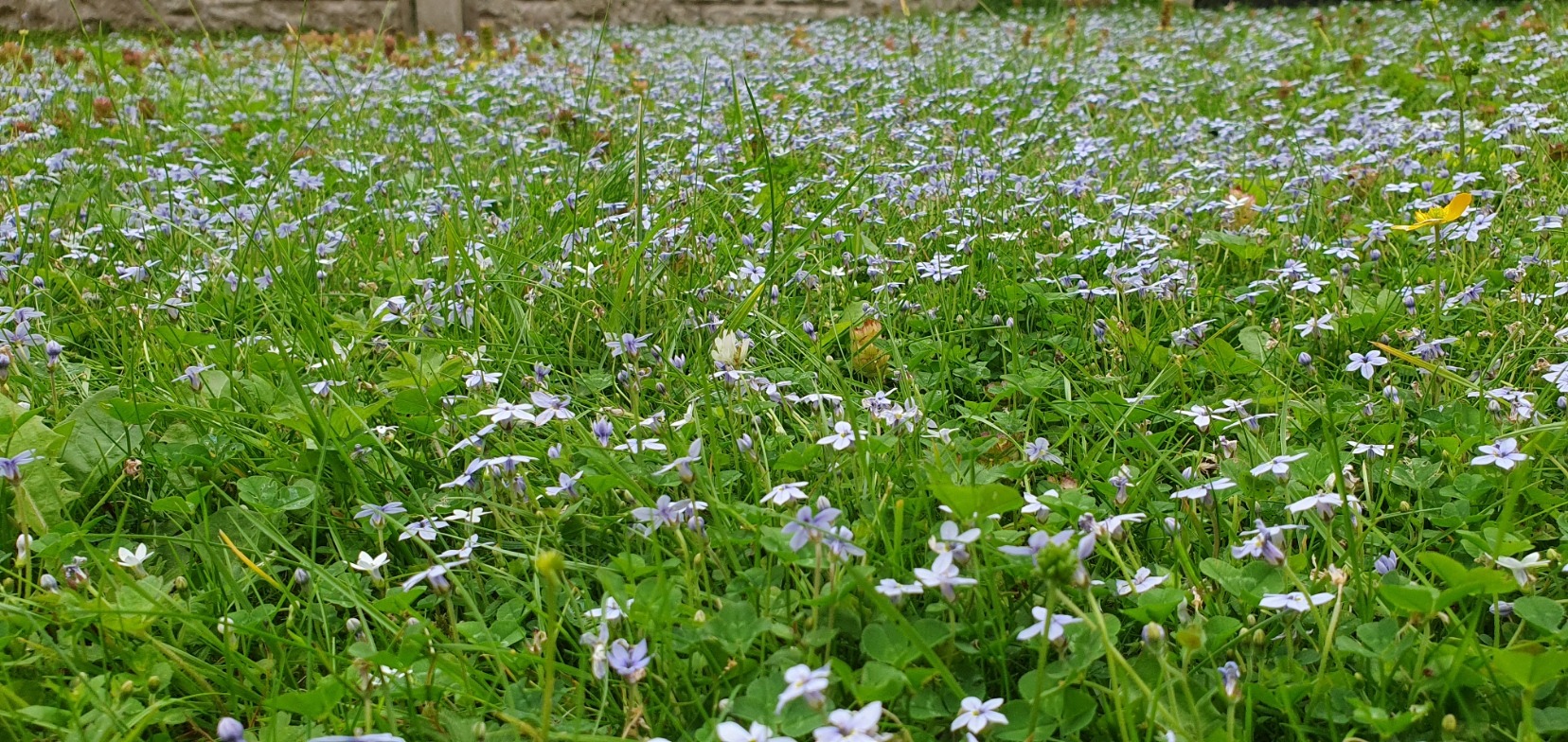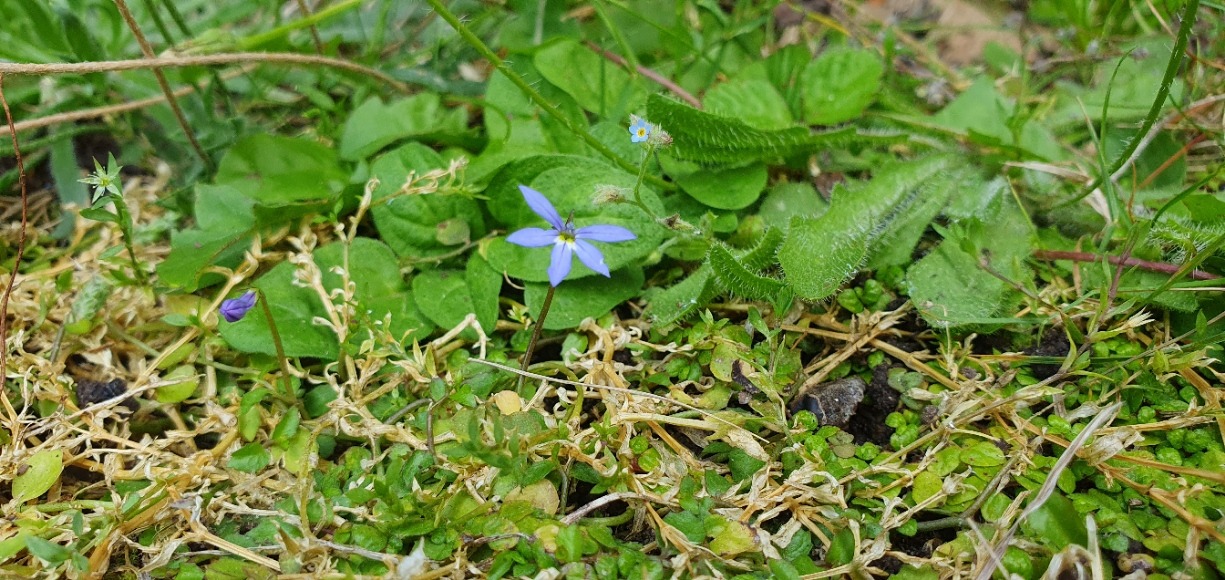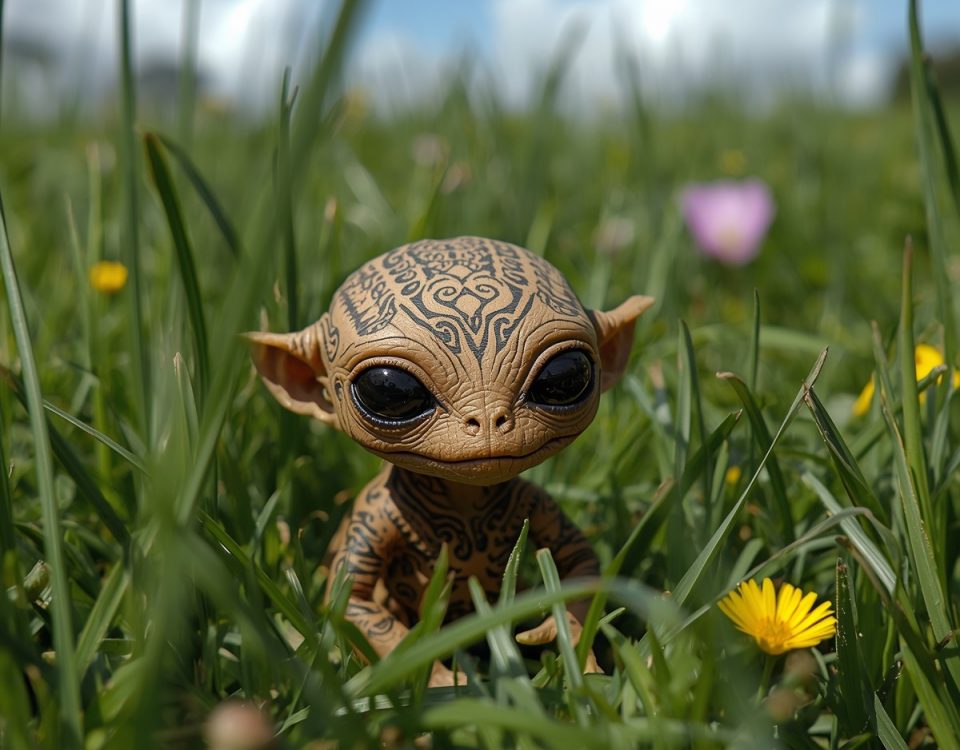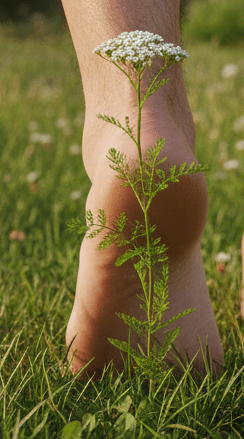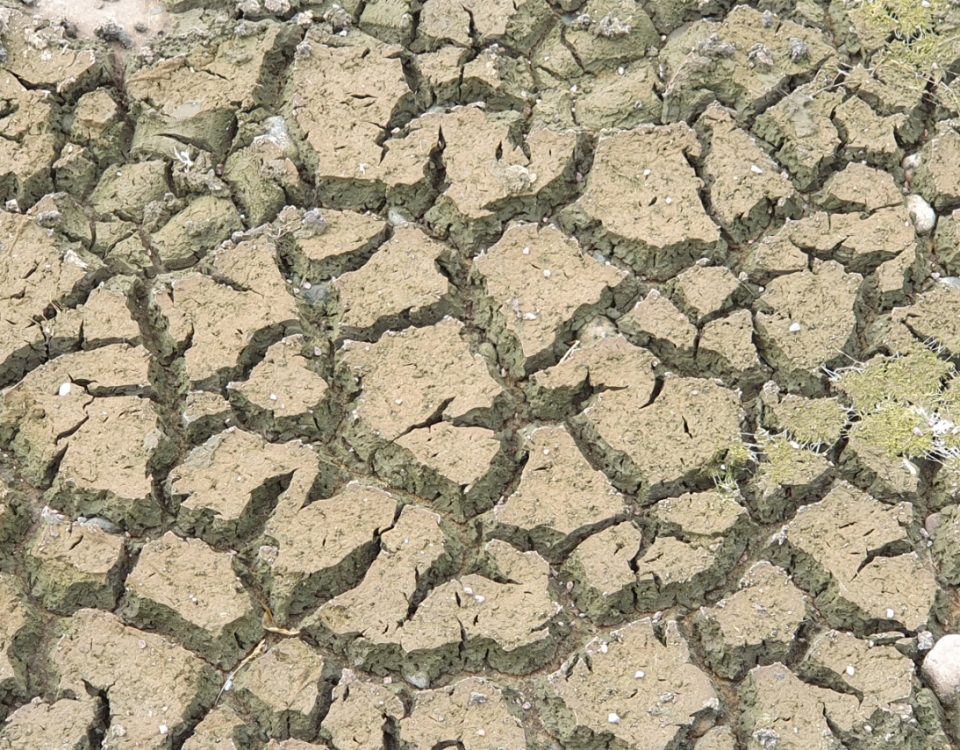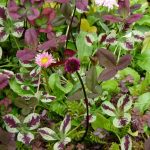
6. White lawn clover – more than it appears.
29 June 2025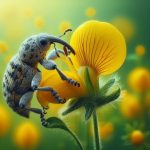
8. The lotus eaters
11 August 2025Earlier research on the composition of lawn flora in Sheffield in 2004, identified 159 species of vascular plants in local lawns (although 60 of them were only recorded once). Most lawn species were forbs and were predominantly native.
The most common non-native (in 14 out of 52 Sheffield lawns) was the clump forming herbaceous perennial we know as American willow herb (Epilobium ciliatum), shown below. Although an herbaceous perennial, it can behave almost like a short-lived ephemeral, since it can be in bud, in flower and setting seed all at the same time.
***
We Brits are becoming used to woeful headlines on damaging invasive alien plants such as Japanese knot weed, Himalayan balsam, or Australian swamp stonecrop/New Zealand pygmy weed. However, being an alien in British lawns is not necessarily all misery and woe.
Lawns tend to be well-defined spaces, are usually specifically managed as such, and most commonly they are mown. These features tend to either keep out or keep under control any alien interlopers, and there are also benefits to be had.
Most British native plants have their primary floral period in Spring and early Summer. With a few notable exceptions such as Autumn-flowering English ivy; before and after these times it tends to be non-natives that provide most of the flowers.
In lawns, you may have already encountered winter flowering aliens such as snowdrops that are native to the Caucasus Mountains, or early Spring crocus, native to the Alps, Southern Europe, and the Mediterranean area; or even alpine squill, a native of mountainous central and Southern Europe and south-western Asia.
Early-flowering non-native plants are becoming increasingly relevant to pollinator survival as climate variability influences both plant and pollinator behaviour. Having something flowering in the lawn for pollinators that are out and about earlier than usual can be life-saving for them. Lawn bulbs, daisies, and dandelions are important in this regard, and it is possible to have them on a scale that provides an aesthetic treat for us humans.
Can you ever have too many early-flowering bulbs in the lawn? I think probably not! I freely confess my pro-bulb bias.
Flowering plants in the lawn can be one of those rare 'human win' - 'nature win' situations.
There are many non-native plants that are more prompted into flower by the changing ambient temperatures (thermoperiodism), than by the seasonal sunlight changes that generally influences most native plants (photoperiodism); although the combined influence of both can be important. If the mean ambient temperature reaches and generally stays above a certain minimum, the plants will likely go on to produce flowers, and keep on flowering until the temperature drops below the minimum again. We use this feature of non-natives to keep our gardens full of colour during our ever-changing day length.
This can beneficially and significantly extend the floral season beyond that primarily influenced by the amount of light, as is the case for most natives. For accuracy, it is worth noting that it is actually the length of darkness (night) rather than day length that is the true influencer here.
In recent years in the warming south of the UK, this can mean some lawn flowers can still be found in late November and early December. Our own native lawn daisy is one of the very few native plants that can seemingly contribute to this, albeit weakly. It is a tough little cookie in the right conditions, and with ever milder winters, can now be found producing flowers on and off all year long, despite notably still preferring the Spring.
******
In terms of non-native floral performance in the lawn, it is hard to beat the Australian lawn lobelia (Lobelia pedunculata), aka ‘Blue star-creeper’ or ‘Matted pratia,’ which can be in flower from April to October in the UK.
Most British gardeners will already be familiar with the annual, blue, hanging basket, lobelia from Southern Africa (Lobelia erinus), however, this perennial, rhizomatous, and ground-creeping lobelia, comes from Southern Australia and Tasmania, where it can occasionally be considered a bit of a nuisance. If you have suitable conditions (it does best in lawns that rarely dry out entirely), and are inclined to let it, it can create a lawn blanket of literally thousands of small five-pointed and star-shaped flowers notably visited by hoverflies as well as butterflies and solitary bees.
According to botanists, Australian lawn lobelia is a highly variable species, with blue, pale blue, and white-flowered forms, although to my eyes the variations appear to go beyond just the flower colour.
There are significant naming issues for this lawn lobelia. The horticulture trade has not made it easy for us gardeners by continuing to use a variety of different names for this and related species. In addition to its currently accepted name, it can also be found under the names Pratia pedunculata, Laurentia fluviatilis, Lobelia fluviatilis and Isotoma fluviatilis. Pratia tends to be the most common misnomer.
The real Isotoma fluviatilis (shown below) is sometimes also named Isotoma ‘fairy carpet’ or ‘fairy footsteps.’ It really is rather twee. It is similar, but much smaller, than Australian lawn lobelia, although it comes from the same general area. It is more matted in habit, succeeds best in consistently damp soils, and is not as robust during a British winter.
I have yet to see it really thrive in competition with other lawn plants. It is nevertheless delightfully tiny, and would be perfect for a fairy gardens' tapestry lawn, if not usually an ideal lawn plant for real gardens.

